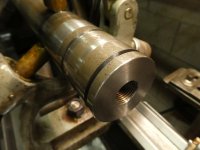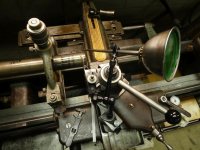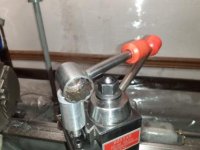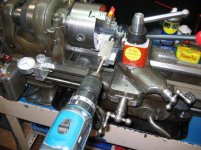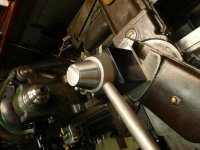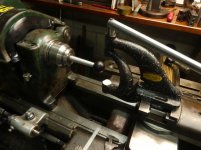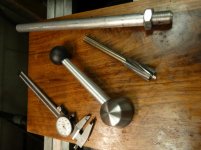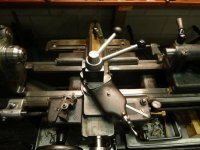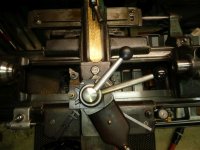I have been doing a fair amount of "decorative" turning where I use "eyeball" angles on my QCTP for the cutter engagement and it's a hassle to grab a big wrench to loosen it and set at the next angle. I am thinking about a custom box end wrench that I can leave up there. Maybe turn a ball and figure out how to attach it to a cutoff wrench? I have watched a hundred (it seems) hours of the BuildFixCreate youtube channel and he has a setup like this. I like it. He has an obviously heat treated and bent chrome wrench he leaves up there and I am thinking I want to copy this idea.
Because I may leave it up there between operations I want the fit to be a good slip fit with little slop and may need to use a metric wrench to achieve this. I am still getting my feet wet on finding the "true dimensions" of a wrench gap but I think I may need a 28mm wrench to fit the 1.11 inch flat to flat measurement on the QCTP nut. A 1 1/8" is too sloppy.
If anyone has a quick ref I can research to help select the right size I'd be thankful but that is the small task. The bigger issue is has anyone bent a wrench? I am assuming lots of heat but can that be done with a map gas bottle or do I need something more industrial? Assuming a high quality wrench is the donor?
I don't know if my "decorative" work questions are appropriate for the general area so I am starting here first.
Thanks for any help.
Because I may leave it up there between operations I want the fit to be a good slip fit with little slop and may need to use a metric wrench to achieve this. I am still getting my feet wet on finding the "true dimensions" of a wrench gap but I think I may need a 28mm wrench to fit the 1.11 inch flat to flat measurement on the QCTP nut. A 1 1/8" is too sloppy.
If anyone has a quick ref I can research to help select the right size I'd be thankful but that is the small task. The bigger issue is has anyone bent a wrench? I am assuming lots of heat but can that be done with a map gas bottle or do I need something more industrial? Assuming a high quality wrench is the donor?
I don't know if my "decorative" work questions are appropriate for the general area so I am starting here first.
Thanks for any help.


